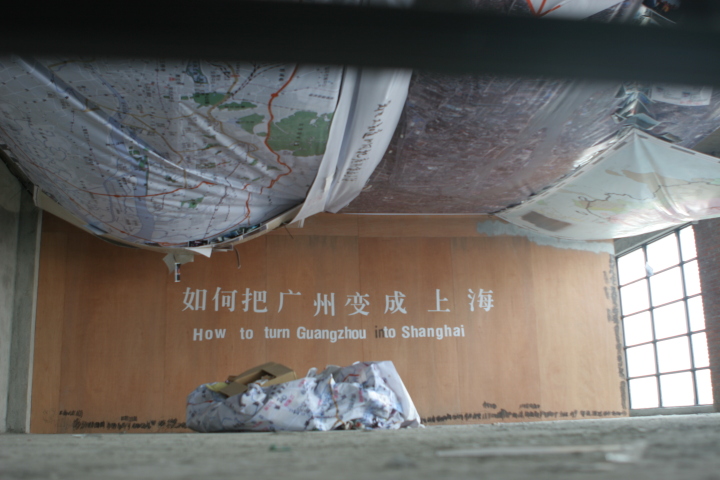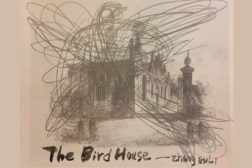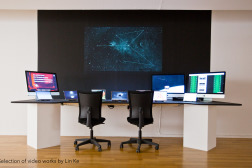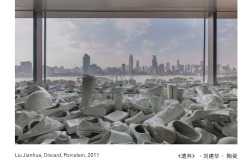

2nd Guangzhou Triennial: Independent Organizations
How to Turn Guangzhou into Shanghai
When BizArt was called to submit a project for the Guangzhou Triennial, we decided to focus on the idea of “how to turn Guangzhou into Shanghai.” How can Shanghai create a new Guangzhou; what can be done differently? The backdrop of this idea was not literally to have the city turning into the other one, but what we would hoped to do, was challenge the artists to consider the idea of transformation, the process itself. We loved the idea of a transformative, changing city and we were interested in seeing how the artists’ perceptions and inclinations would guide these changes. In the end we were intrigued by the possible misfortune or politically incorrect changes that artists might suggest.
Participating Artists: Chen Xiaoyun, Alexander Brandt, Geng Jianyi, Hu Jieming, Huang Kui, Jin Feng (Xiao), Jin Feng (Lao), Liu Jianhua, Ni Jun, Shi Yong, Tang Maohong, Xiang Liqing, Xu Zhen, Yang Zhenzhong, Zhang Ding, Zhang Qing, Yu Ji, He An, Liu Wei, Song Dong, Zhu Yu
A Few of the Artists Proposals:
Ni Jun
Project Description
External characteristics between Chinese cities are becoming less and less different. The feeling of being in a foreign place has nearly disappeared, except in one’s mind. Even names of the cities are progressively limited to marks. A lack of differences has become a particularity. The artist has decided to create a small game: information on Guangzhou’s map will begin to be filled with Shanghai locations, what will happen then? Guangzhou itself will turn into Shanghai.
Materials: Two maps, an original one of Guangzhou, and another one of Guangzhou reprinted with names of various Shanghai locations.
Zhang Qing
Shanghai
Shanghai is developping at lightning speed, therefore the walking speed of its residents has also increased. There are migration steps towards other cities. Overtime working hours are extending without having any limits. These changes and more have given Shanghai a new attitude. The large number of buildings, densily filled with people is the key to the city’s development.
Guangzhou
Guangzhou yearns for the same development and success of Shanghai; thus they must increase the people’s walking speed, extend the overtime working hours, and insist that the number of buildings becomes highly dense throughout the city.
According to the transportation, buildings, and working particularities of the population in Guangzhou, it is possible to develop research on the increasing speed of walking steps, increasing the overtime working hours and the increase in the capacity of carriers–a carrier is an 88 floor vehicle. These changes could solve all their problems. People can continue to commute between the place they work and where they live; it will be more efficient and therefore will contribute to the speed of the city’s development. Guangzhou will then become a mirror to Shanghai’s economy and culture.
Liu Jianhua
Project Presentation
1. A) Film a short video on DVD according to the thematic questions proposed
B) Type subtitles under the images
2. A) Print the questions on 220 x 60 cm pieces of fabric, made of silver and silk; hang them in the space
B) Project the DVD of Shanghai next to said fabric
3. A) Make a book, dimensions: 50 x 30 cm
B) Each question will be paired with a painting or a picture
C) The book should be placed on a 50 cm broad shelf, 120 cm high
D) Print the questions and ask the public to answer, place them back in the original spot or send them to the artist, so he can organize them accordingly
4. A) In the future, some of the ideas among the synthetized answers can be exhibited
Zhang Ding
Project Description
Clone Shanghai in Guangzhou
Make a selection of blood cells from six million talented Shanghainese people. Build in Guangzhou an experimental base for their clones.
By the end of 2005, build a base in Guangzhou for the Shanghainese clones. Collect blood cells from 100% Shanghainese people born after 1980, and clone them in Guangzhou. It will then be possible to produce a second generation with the same natures of the Shanghainese kind; the clones in Guangzhou will be similar to the original human copies. By year 2030, the quota of these people born in Guangzhou will be very high.
Population in Shanghai: 16,000,000 inhabitants (in 2005)
Population in Guangzhou: 10,000,000 inhabitants (in 2005)
In year 2030, the regular number of inhabitants in Guangzhou will be raised up by approximately six million, consisting of talented young people, born as Shanghainese clones. It will unprecedently ruin the employement market of the local Cantonese, and the quota of unemployed young Cantonese will increase to more than 90%, incurring unemployement for eight million people. The rates of birth and death will be dramatically changed, in about 50 years the Cantonese will progressively disappear.




